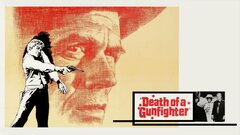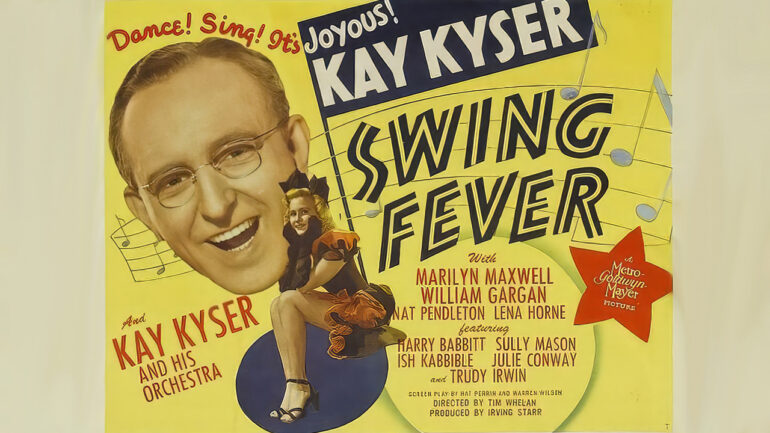One of the greatest American artists of all time, Lena Horne endured more than her fair share of "Stormy Weather" as the title of her 1943 film and sultry signature song implied. Yet the chanteuse and actress - who possessed one of the most lush voices in the history of recorded music - broke down barriers, not only with performances of memorable songs like "Honeysuckle Rose" and "Black Coffee," but also for speaking out about the prejudice she experienced during her early years as a contract player at MGM and the subsequent hardships she experienced throughout her time in the entertainment business. The recipient of a Kennedy Center Honor in 1984, the elegant actress was a legend with a cause. Horne sang her pain, acted through intolerance, and fought long and hard to erase color lines.
Lena Calhoun Horne was born in Brooklyn, NY on June 30, 1917 to Edwin "Teddy" Horne and Edna Scottron. After her parents separated, the young Horne moved in with her paternal grandparents and uncle. She was exposed as a child to the fight for civil and women's rights as her grandmother, Cora Calhoun Horne, was an active member of the National Association for the Advancement of Colored People (NAACP), Urban League, and Suffragette organizations and it was she who often brought her granddaughter to meetings.
Horne's fair-skinned mother Edna was a singer and dancer in various drama troupes, and started bringing her daughter on tour when she was six. They moved around frequently due to Edna's career, and Horne often stayed with relatives or family friends, such as two women from Macon, GA who taught her southern-style cooking as well as instructing her in the Bible. The youngster reunited with her father while she was living in Fort Valley with her uncle. After years of going from city to city, Horne and her mother settled back to New York when she was 12 years old.
Four years after moving back home, Horne began her career as a dancer at Harlem's legendary Cotton Club, earning $25 a week. There, she was introduced to the growing community of jazz performers, including Billie Holiday, Cab Calloway, Duke Ellington, and Harold Arlen, who would go on to write her biggest hit, "Stormy Weather." She also discovered her vocal talent was on par with professional performers, so it was not long before the young girl made her recording debut with Noble Sissle's band in 1936.
Horne made history in 1940 when she toured with Charlie Barnet's band - the first African-American to do so with an all-white band. While changing the face of the music industry, Horne also made waves as a theatrical performer. She made her first Broadway appearance in the 1939 musical "Blackbirds" and later received her best reviews for her performance in a 1957 production of "Jamaica."
In 1942, two years after she toured with Barnet's band, Horne rewrote history again when she became the first black performer to receive a contract from a major film studio. Discovered by a talent agent while performing at the Cotton Club, MGM gave the talented songstress various musical projects, including "Panama Hattie" (1942), where she had an uncredited role as a nightclub singer. Horne's appearance in the film, however brief, was widely regarded as the best aspect of the entire film.
Impressed with her onscreen appeal, MGM gave her a bigger role in their all-star revue, "Thousands Cheer" (1943), where Horne sang another one of her most famous numbers, "Honeysuckle Rose." However, although she was signed to the most revered and powerful movie studio and lacked nothing in the way of beauty, style and talent, Horne's skin color remained an issue for moviegoers throughout most of the country at that time. Because of this perspective, her film roles were often kept to minor characters or shot separately, so she was edited out for versions shown to Southern moviegoers who could not accept black performers playing anything other than servants or sidekicks. Getting edited out in certain versions of her films was the lesser of two evils for Horne, who stipulated in her MGM contract that she would not get such stereotypical roles.
The studio capitalized on Horne's skin color much more than recognizing her true talent. Iconic makeup company Max Factor even invented the "Little Egyptian" makeup line for the star to highlight her dark features. MGM also loaned the actress to another studio - 20th Century Fox - for its all-star, all-black musical "Stormy Weather" in 1943. Singing the title song gave Horne her signature number that would remain the song most closely associated with the star. It was also her first real acting role. "In every other film I just sang a song or two," Horne later remembered. "'Stormy Weather' and 'Cabin In the Sky' were the only movies in which I played a character who was involved in the plot."
By the mid-1940s, Horne was the highest paid black performer in the country. Her renditions of "Deed I Do," "As Long as I Live," and Cole Porter's "Just One of Those Things" became instant classics. Thousands of black soldiers abroad during World War II had Horne's photos pinned up above their bunks. She had one last film appearance, singing "Baby Come Out of the Clouds" in "Duchess of Idaho" (1950), before Horne became an unfortunate target of that era's biggest political and cultural dilemma.
Hollywood and politics clashed in the early 1950s when the Joseph McCarthy congressional hearings resulted in the blacklisting of several performers, including Charlie Chaplin, Orson Welles and Gypsy Rose Lee. Horne, who had been politically active since she was a young girl, accompanying her grandmother to NAACP meetings, was now suddenly blacklisted as an adult for her participation in what was then considered "Communist actions." Not surprisingly, her film career was put on hold. Instead, the hardworking entertainer refocused and spent her time singing in nightclubs and cabarets. It would take six years for Horne to return to Hollywood, where she appeared as herself in the comedy musical, "Meet Me in Las Vegas" (1956).
After the decline of McCarthyism, her political involvement - particularly in regards to civil rights - intensified, with Horne continuing to be an active member of the NAACP. On Aug. 28, 1963, she joined 250,000 others in the march on Washington for Jobs and Freedom, the historic day when Dr. Martin Luther King, Jr. gave his "I Have a Dream" speech. Horne also spoke at a rally that same year with another civil rights leader, Medgar Evers, just days before his assassination.
Tired of always being offered throwaway cameo roles rather than starring vehicles in films, Horne decided she was done with Hollywood filmmaking. She instead chose to focus on her music and television appearances, where she was a favorite guest star on the talk and variety show circuit, including "The Ed Sullivan Show" (CBS, 1948-1971) and "The Perry Como Show" (CBS, 1948-1963). Horne also appeared on TV specials hosted by her A-list friends Judy Garland, Dean Martin and Frank Sinatra, as well as the comedy hour "Rowan & Martin's Laugh-In" (NBC, 1968-1973).
Music was always synonymous with Horne, and it was where she left her greatest mark. Her 1957 recording Lena Horne at the Waldorf-Astoria became the best-selling album by any female artist in RCA Victor's history. The early 1970s proved challenging for Horne, who lost her father, son, and husband in the span of 12 months. She retreated from public life for a certain time, only to perform in CBS' all-star entertainment revues "That's Entertainment" (1974) and "That's Entertainment II" (1976). Horne also appeared as Glinda the Good in the 1978 film "The Wiz," an African-Americanized version of "The Wizard of Oz" (1939) starring Diana Ross and Michael Jackson. It was her final feature film appearance.
One of Horne's proudest achievements occurred outside the entertainment industry. After having turned down numerous offers, the artist received an honorary doctorate from Howard University in 1980. Horne also made a triumphant return to Broadway in 1984 with her comeback show "Lena Horne: The Lady and Her Music." The Brooklyn native saw her name in the bright lights on Broadway once again as the one-woman-star of the autobiographical production that included such signature songs as "Stormy Weather" and "The Lady Is a Tramp." The show won a Drama Desk Award, a Tony Award, two Grammy Awards (for its soundtrack), and a rave review from the New York Drama Critics' Circle.
Fifty-two years after getting her MGM contract, Horne finally spoke out about the overt prejudice she had experienced with the studio when she was asked to co-host the 1994 special "That's Entertainment III." She accepted - but only if she could comment on her early years with MGM. That same year, she reunited with Sinatra in "Sinatra Duets" (CBS), and filmed her own special "An Evening with Lena Horne." Working only sporadically at this point, in 2004, she appeared as herself in the celebration of MGM's golden years, "The Masters Behind the Musicals." Out of the public eye for the next few years, Horne passed away on May 9, 2010 at age 92.





















































































